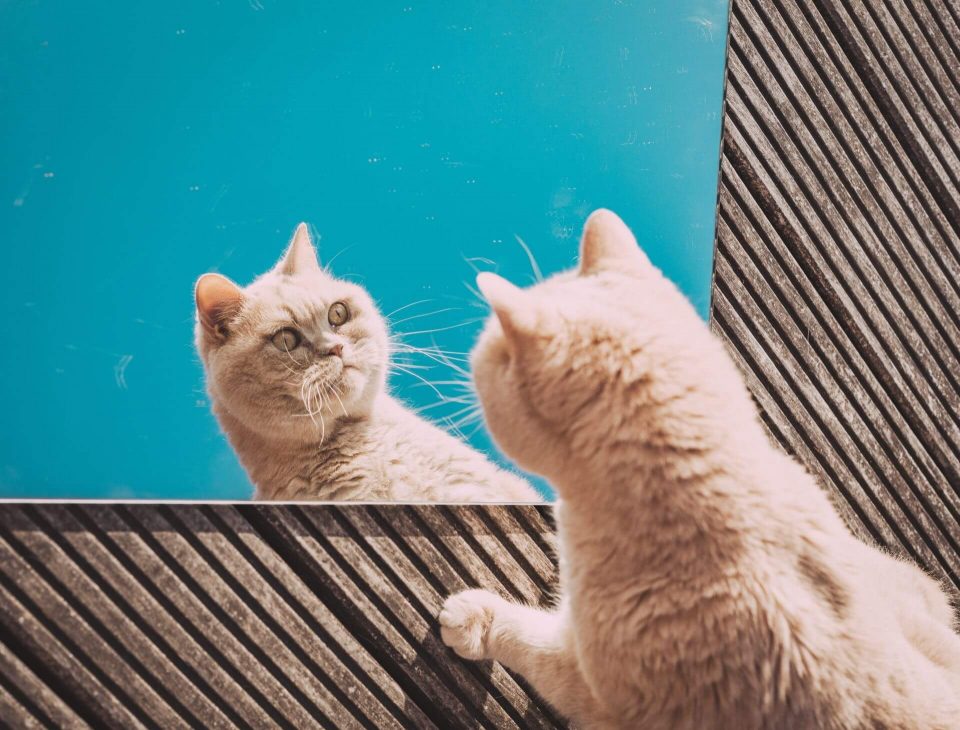How to Type and Pronounce Spanish Accents: Complete Guide
Spanish accents are giving you a headache? Let’s make them easy to understand. ✅
Which one is your favorite? El gato or el perro? Choose carefully. The cat is watching.

Hola, Spanish language aficionado! Welcome to another basic lesson about animals in Spanish. Whether you want to find out what el gato means or how to say ‘dog’ in Spanish, stick around and read on. From fluffy pets to animals from the savannah or sea creatures, we’re going to explore the entire animal kingdom in search of a complete list of animals in Spanish.
Big, small, cute, or menacing, furry or not, all animals are our neighbors on Earth. That’s why we should always remember to respect their boundaries. After all, we share a home and a trophic pyramid in which each species plays a crucial role. Except for the cat, of course. The cat is only here to make Zoom calls fun.
Now that we’ve settled that let’s discuss what was promised: the animals in Spanish or los animales en español.
Animals are a universal topic of conversation, thanks mainly to our pets. That’s why studying their names in Spanish is considered one of the most basic Spanish lessons, together with the days of the week and saying hello. Besides, the animals and the sounds they make are also one of the first things we learn as children. It only makes sense to follow the same “recipe” when learning a new language as adults.
Here are the most popular farm animals and pets and their names in Spanish:

Known as las mascotas in Spanish, the pets (together with the farm animals) make up most of the basic Spanish vocabulary about animals. Considering that they live in our homes or yards, it’s more likely to mention them during a conversation in Spanish rather than a zebra or a lion.
Now you know that un gato is ‘a cat’ and un burro is a donkey in Spanish. But there are so many more wild animals out there. From mammals to insects, reptiles, and birds – they all have their own names in Spanish.
Are you ready to move on to the wilderness? Let’s see how to say ‘lion’ in Spanish.
| Animal name in Spanish | Animal name in English |
|---|---|
| águila | eagle |
| oso | bear |
| ciervo | deer |
| dinosaurio | dinosaur |
| elefante | elephant |
| gorila | gorilla |
| león | lion |
| lagarto | lizard |
| mono | monkey |
| ratón | mouse |
| búho | owl |
| serpiente | snake |
| tigre | tiger |
| araña | spider |
| cebra | zebra |
| caracol | snail |
| cocodrilo | crocodile |
| escarabajo | beetle |
| hipopótamo | hippopotamus |
| hormiga | ant |
| jirafa | giraffe |
| mosca | fly |
| zorro | fox |
| lobo | wolf |
| canguro | kangaroo |
| murciélago | bat |
| paloma | pigeon |
| abeja | bee |
| mariposa | butterfly |
If you are wondering what’s the correct grammatical gender for all these animals, let’s look at a short explanation.
As a general rule, nouns ending in -o in Spanish are masculine. On the other hand, nouns ending in -a are feminine. However, most animals in Spanish have both a male and a female form. But not all of them. For example, ‘the cat’ can be el gato (masculine) or la gata (feminine), but el hámster will always be masculine.
Last but not least, let’s boost your Spanish vocabulary with the Spanish names of fish and other aquatic animals.
| Animal name in Spanish | Animal name in English |
|---|---|
| delfín | dolphin |
| pulpo | octopus |
| orca | orca |
| salmón | salmon |
| tiburón | shark |
| atún | tuna |
| ballena | whale |
| cangrejo | crab |
| foca | seal |
| pingüino | penguin |
| calamar | squid |
| langosta | lobster |
| medusa | jellyfish |
Do you want to go beyond the basics and learn Spanish fast? Get Mondly, the award-winning language learning app that will help you speak Spanish like a pro.
It can be really tricky to master the Spanish pronunciation if you don’t actively live in Spain. But with Mondly, you’ll have access to a fast and highly efficient learning method that allows you to learn Spanish naturally with:
Start using Mondly for free on your computer or download the app and learn Spanish anytime, anywhere.

Spanish accents are giving you a headache? Let’s make them easy to understand. ✅

¿Que hora es? It’s high time we learned how to answer to this world-renowned question.

🌈 You’d be surprised how often we actually use colors in our day-to-day conversations.
We learned a lot😊♡
Nice 👍
Growing up in Texas, I’ve always been taught that el pollo refers to chicken the meat, whereas la gallina is a hen, a chicken. Is this not true everywhere?
I learnt a good amount of animals
This is a good lesson.
This helped alot
Are there ANY animals that start with the letter U in Spanish?!!!